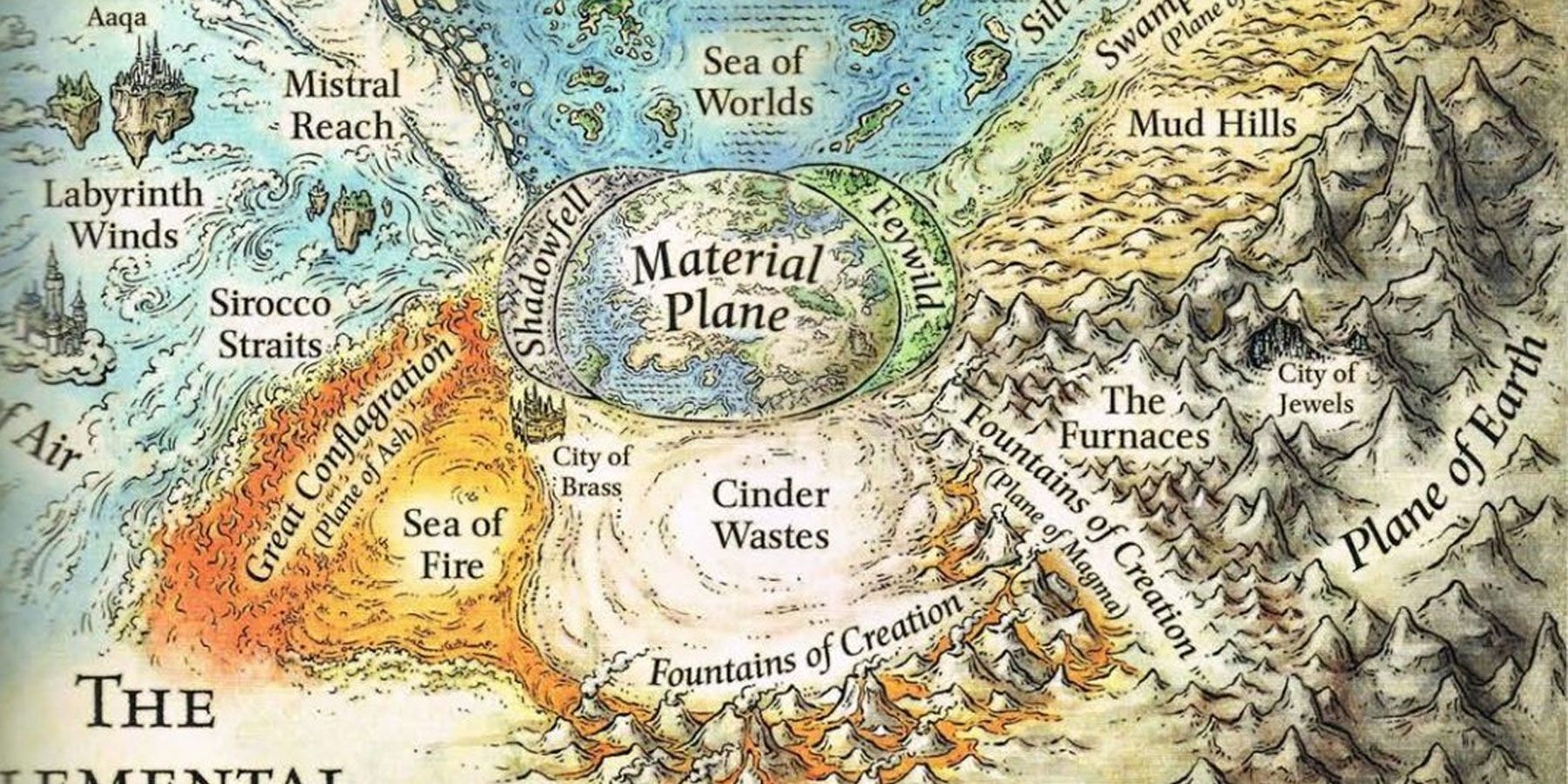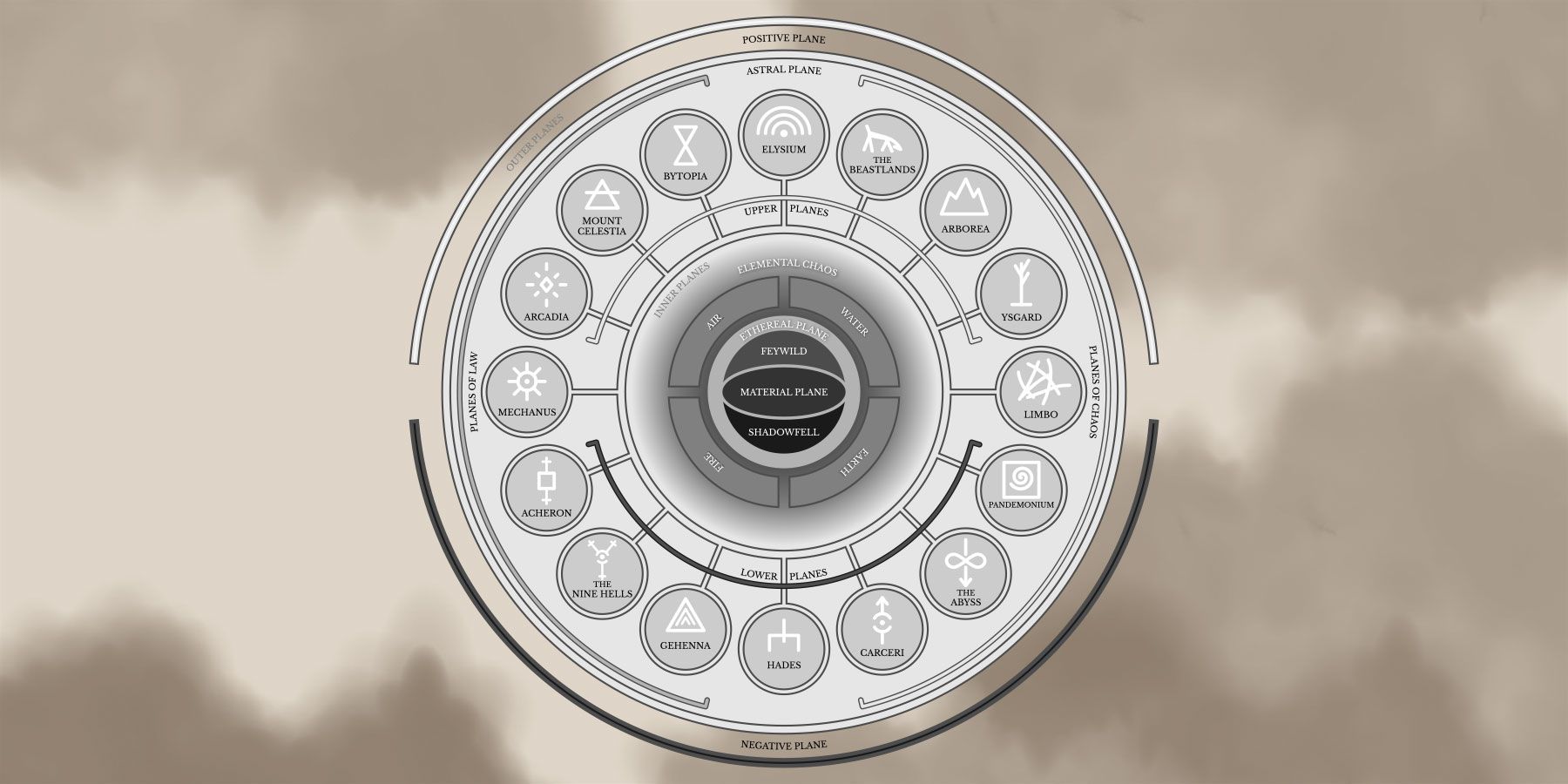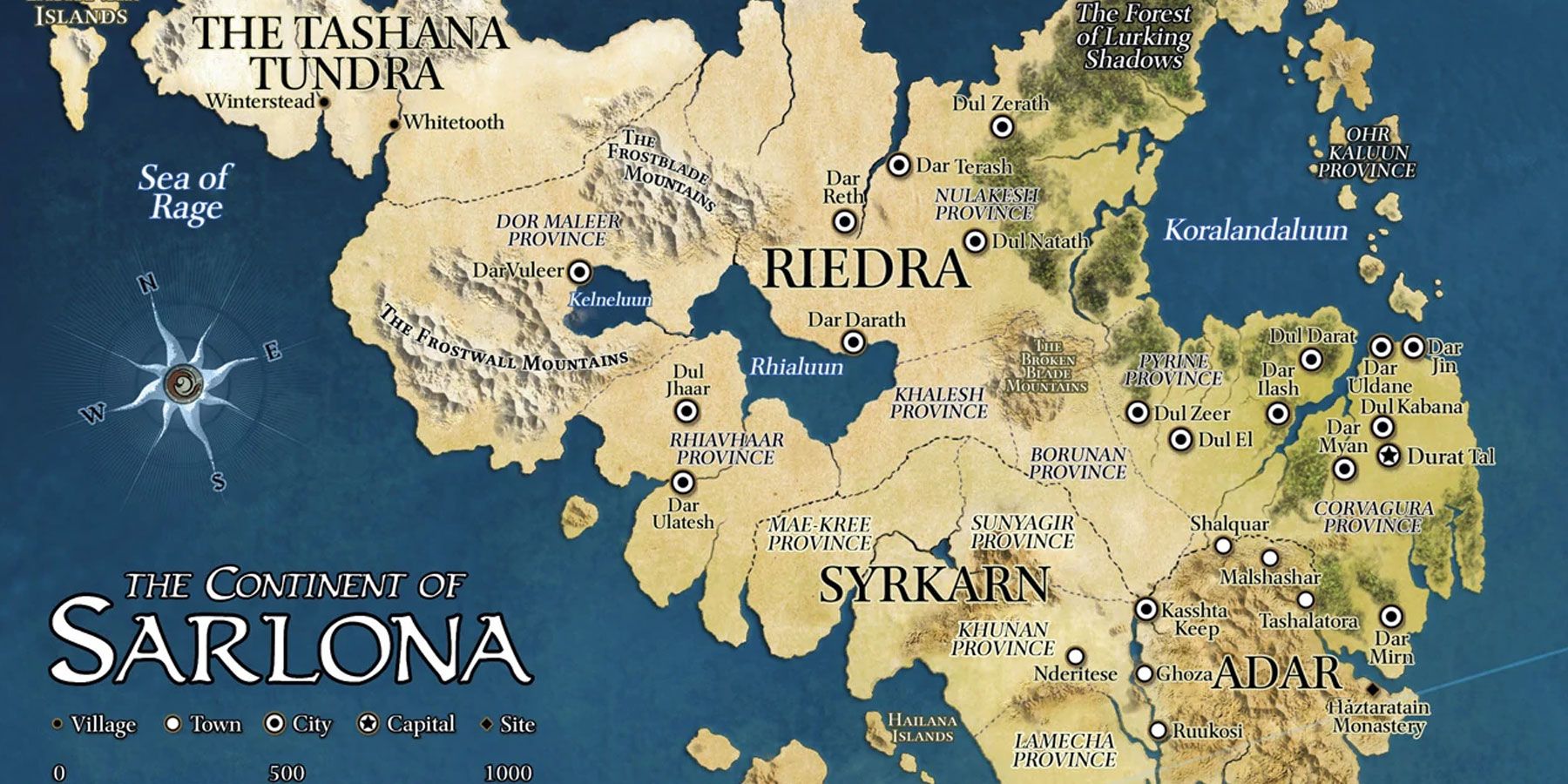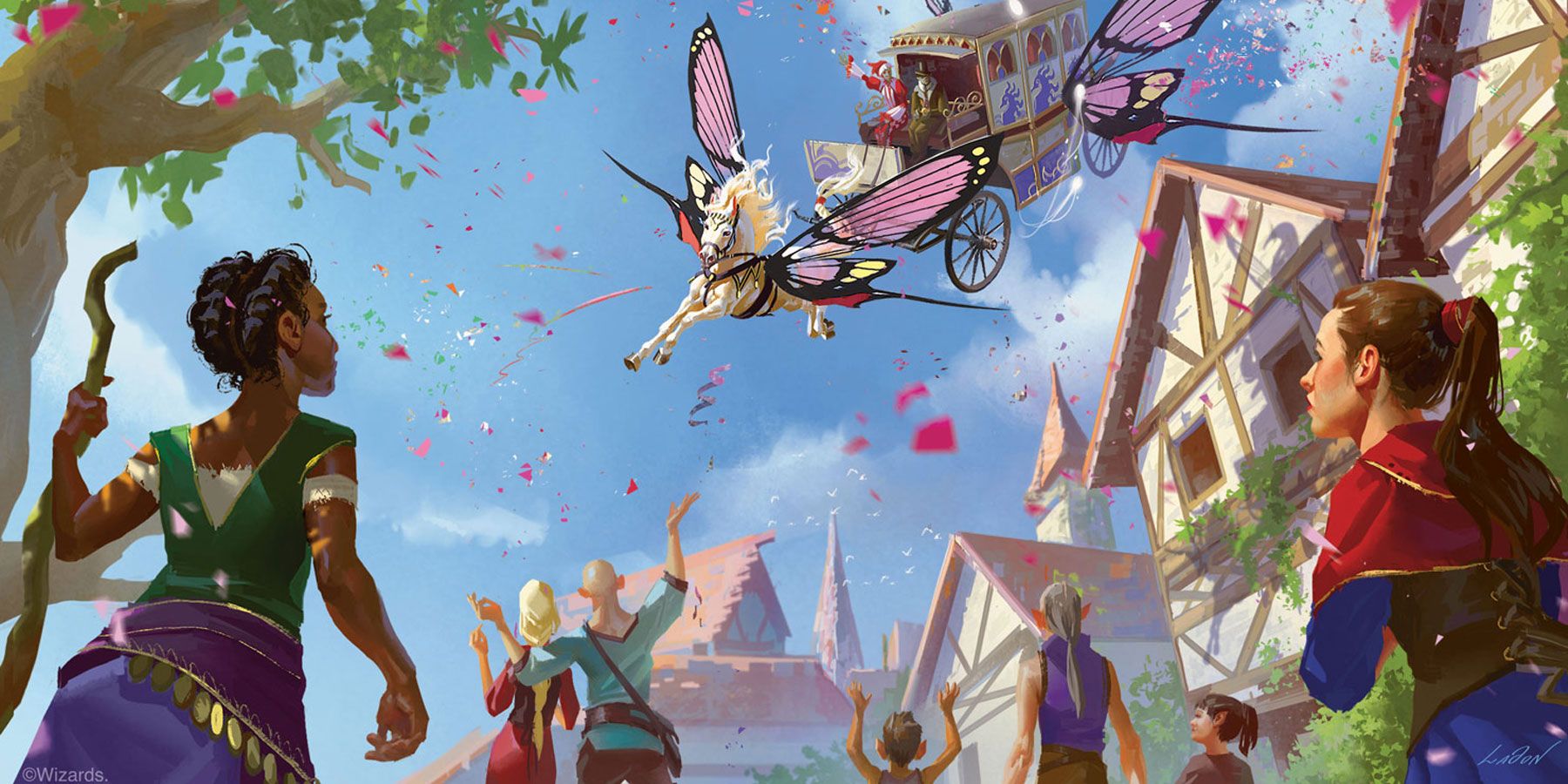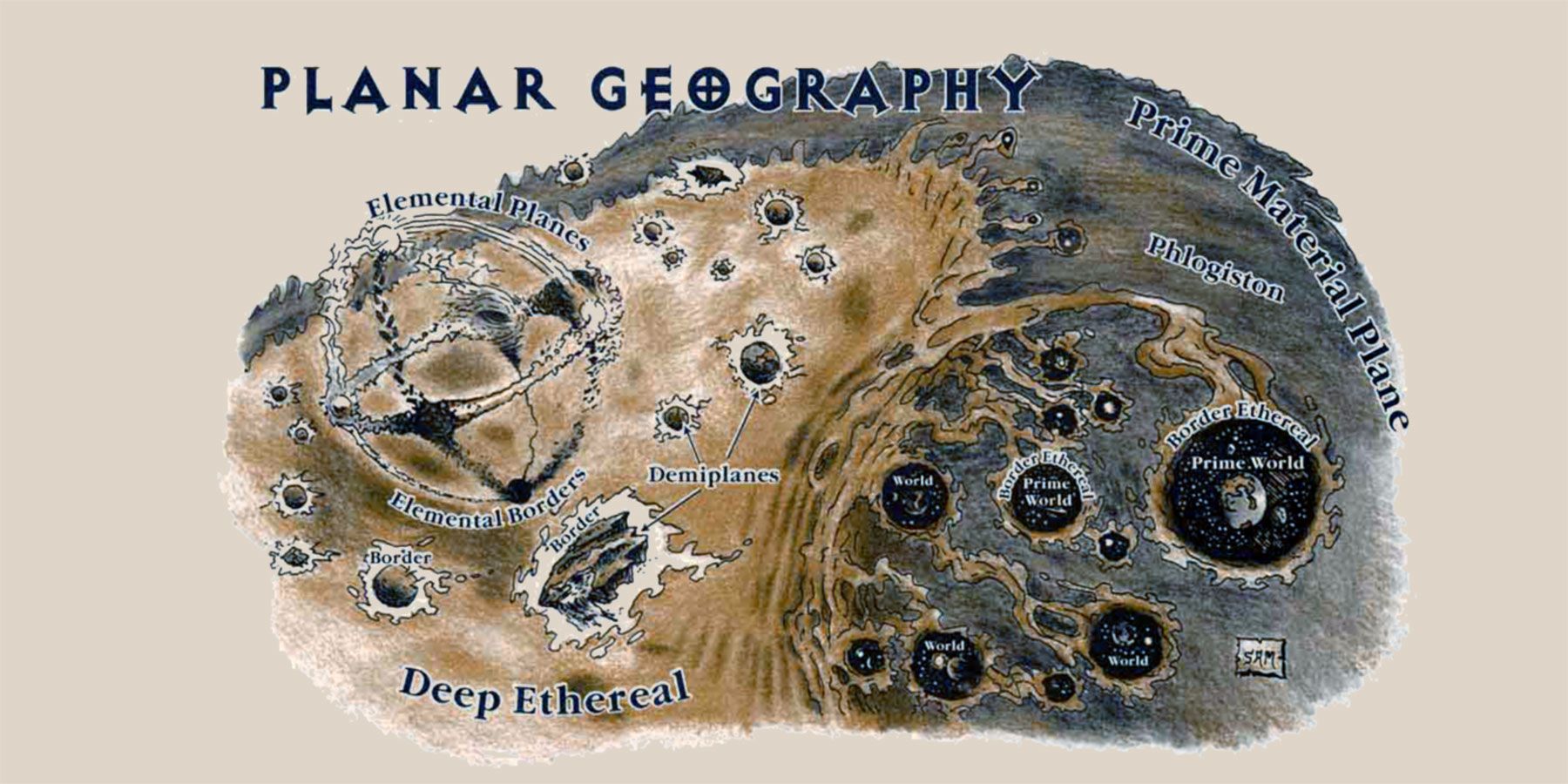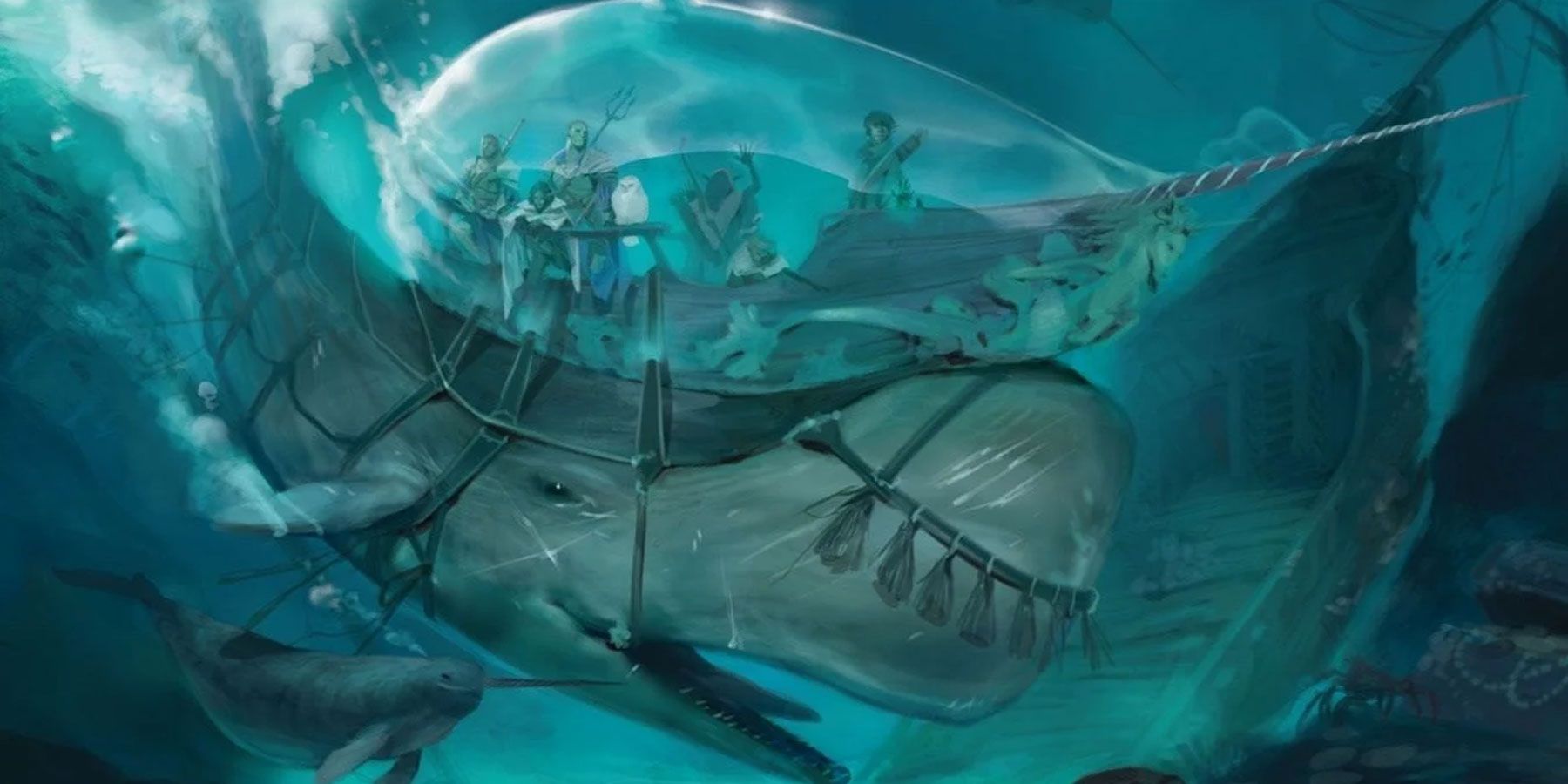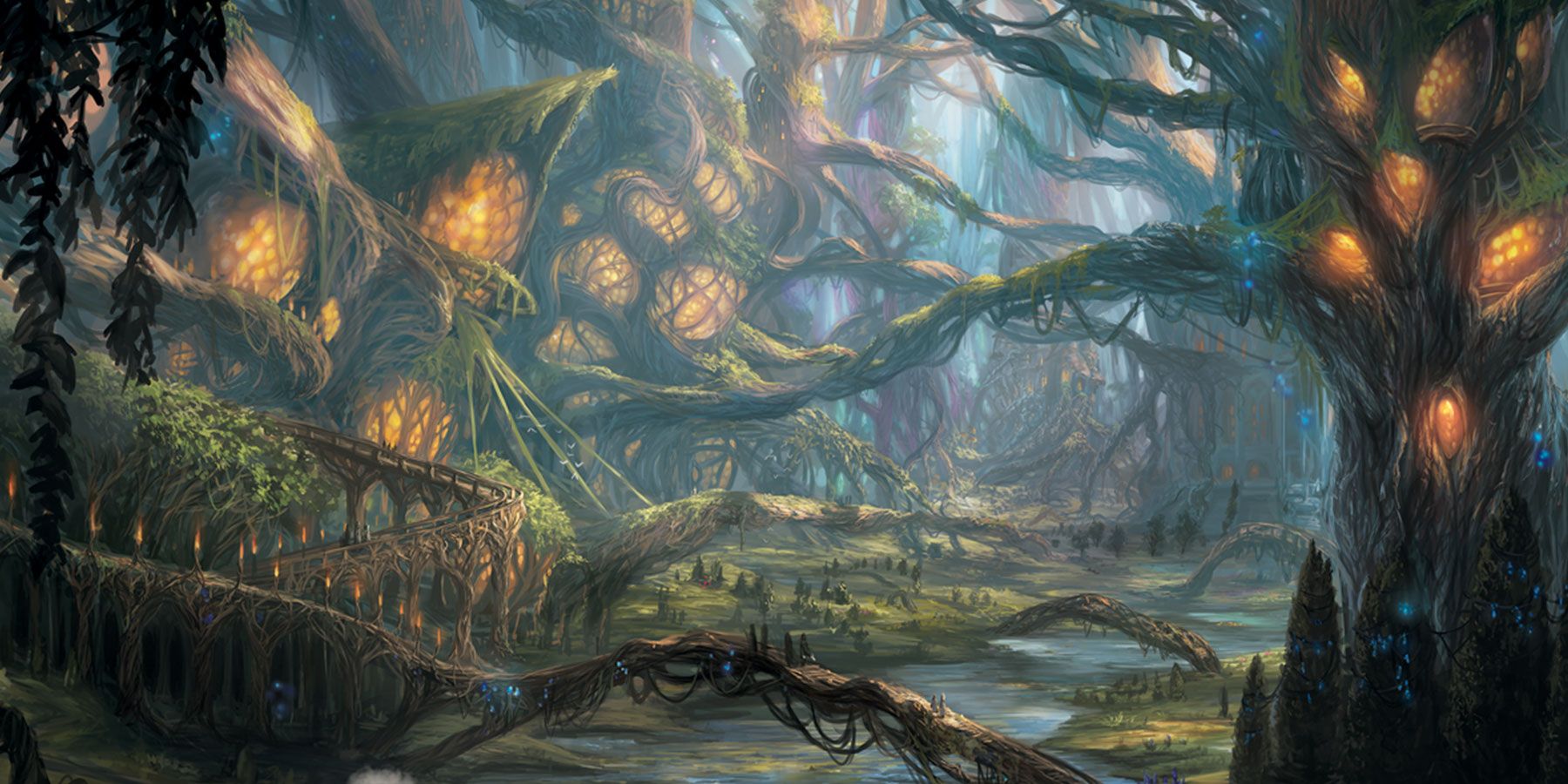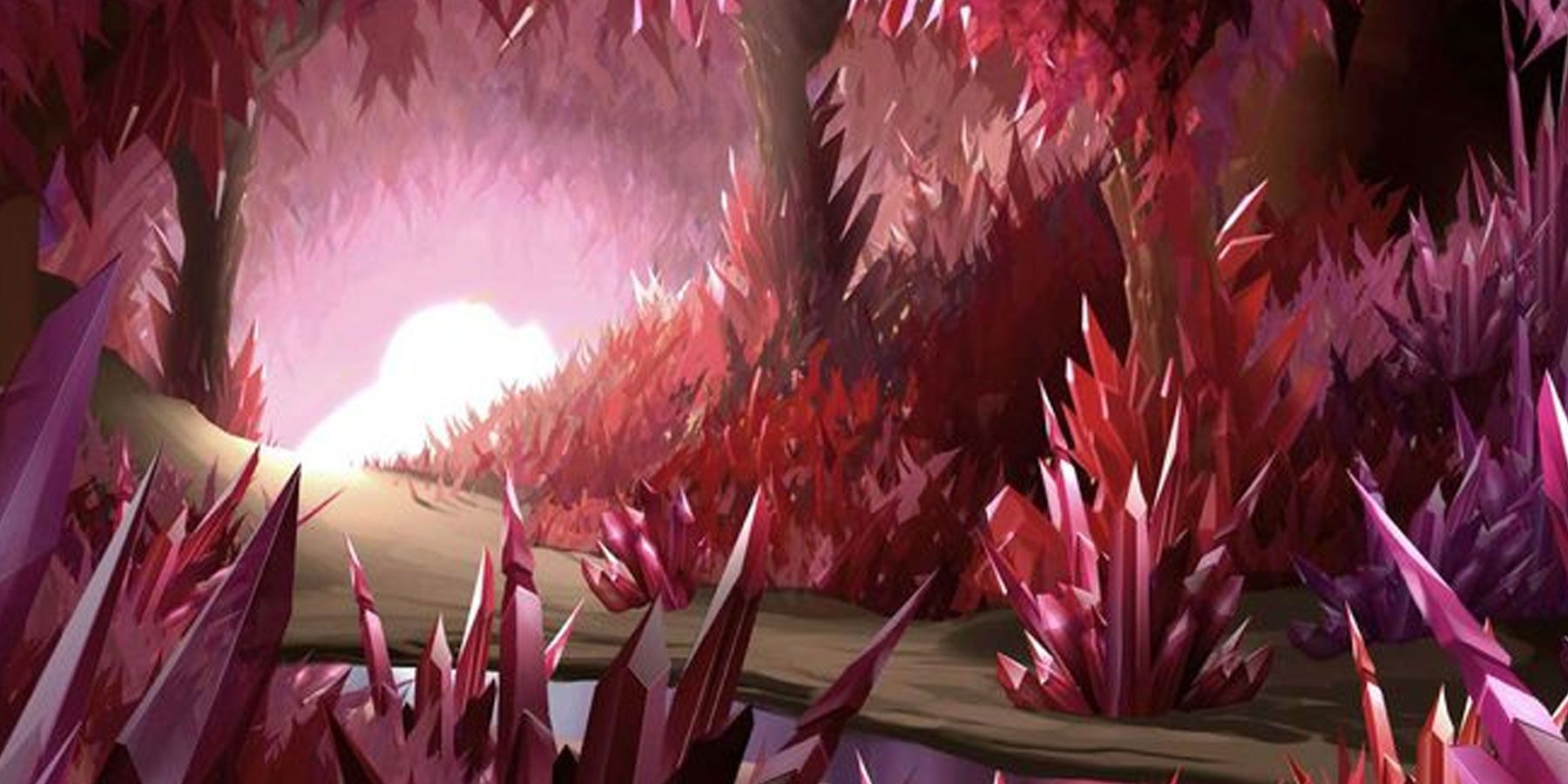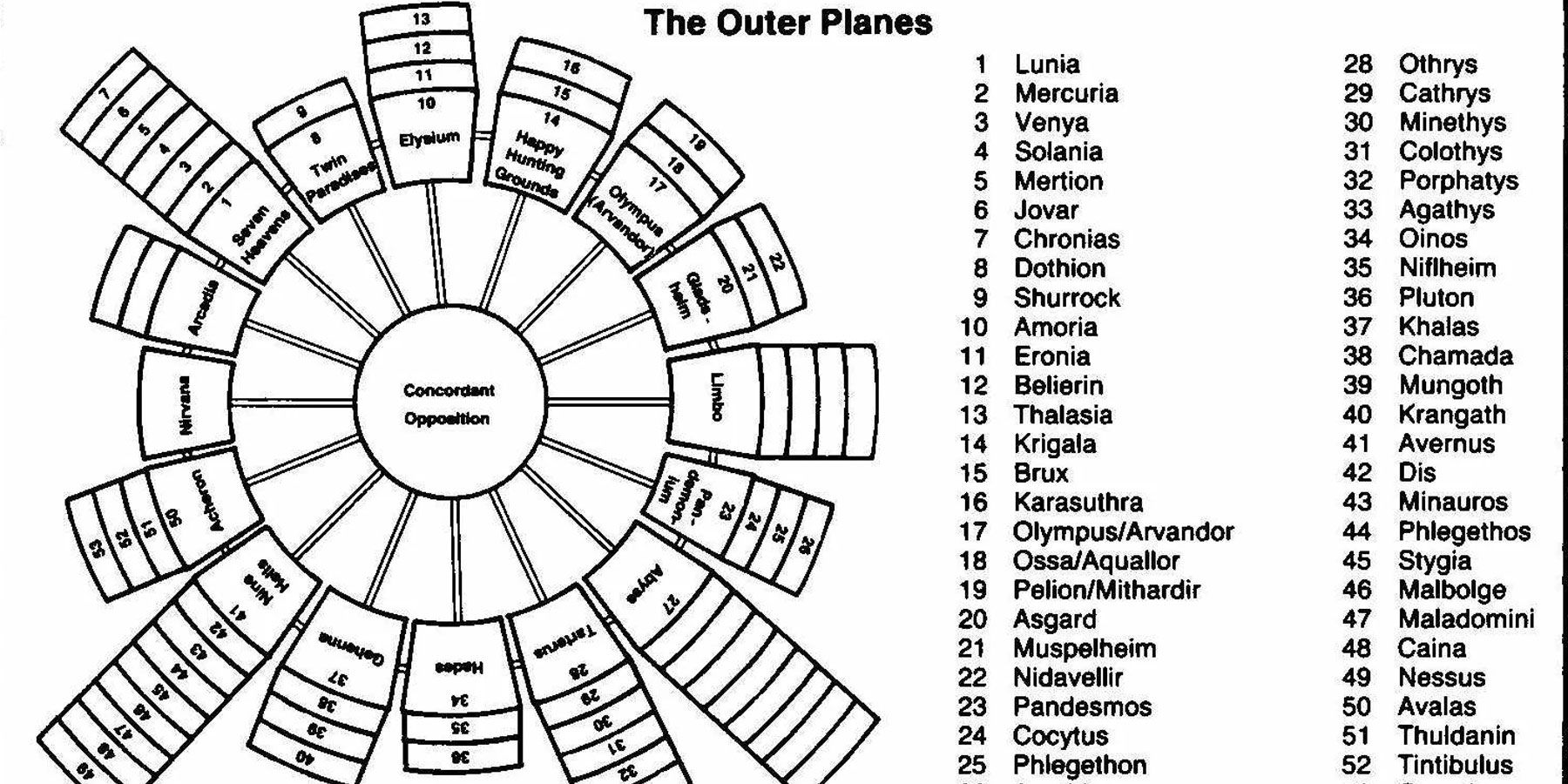Dungeons & Dragons gives players a chance to explore an unlimited number of worlds and stories. GMs can choose to use preexisting worlds or to create their own unique settings. While creating homebrews or unofficial Dungeons & Dragons content is a popular way to allow players to explore numerous worlds, the game has plenty to discover. Many fans of the hobby may not be aware that the official Dungeons & Dragons settings take place in a multiverse.
This multiverse is described as The Planar System, which consists of multiple planes of existence. These planes can often overlap or remain completely separate from other planes. Each plane has unique characteristics and can create interesting story elements.
8 Great Wheel Cosmology
The fifth edition of Dungeons & Dragons uses the Great Wheel Cosmology, however, this version of the cosmology is not the first version of the system. The earliest editions of Dungeons & Dragons introduced the concept of the Inner, Ethereal, Prime Material, Astral, and Outer Planes. During this early development of the game, there were initially only four inner planes.
Fourth edition Dungeons & Dragons moved to the World Axis cosmology. This version drew inspiration from the World Tree. The World Axis cosmology places the astral planes above the fundamental (material) planes and the energy and elemental planes below them.
The fifth edition returned to the Great Wheel Cosmology, however, aspects of the World Axis cosmology were included. Currently, this model features sixteen outer planes. The material plane sits at the center of the wheel, between the feywild and shadowfell planes. These three are surrounded by the elemental and energy planes.
The Great Wheel is also divided into the alignment system, with the positive (good) aligned planes at the top and the negative (evil) aligned planes at the bottom. The further a plane is to the left of the wheel the more lawful, while planes on the right side of the wheel are more chaotic.
7 The Material Plane
The Material Plane is where players will often find themselves during a campaign. The second edition of Dungeons & Dragons, Dungeon Master's Guide, introduces the concept of there being multiple Prime Material Planes.
The World Tree cosmology, however, claims there are an infinite number of material planes. In Tasha’s Cauldron of Everything, the spell is known as Dream of the Blue Veil and also mentions an infinite number of material planes.
This spell allows players and up to eight creatures to experience visions of another material world. The spell also mentions Toril, which in the World Tree Cosmology acts as a central hub for the other material planes. Toril orbits a sun in a system similar to the solar system.
6 The Feywild & Shadowfell Planes
Both the Feywild and Shadowfell Planes were introduced in the 4th edition of Dungeons & Dragons. While they were also eventually introduced into the fifth edition, there was very little descriptive information about the planes.
The Wild Beyond the Witchlight, which was released in 2021, is the first official source material that explores the Feywild. The Feywild is inhabited by a variety of creatures, from elves and pixies to hags and giants. Players may encounter creatures inspired by folk tales from different cultures throughout this plane.
The Shadowfell is often called the Plane of Shadow. It is a counterpart to the Feywild, and full of death and decay. One legend about the creation of the current Shadowfell is that it was once bright and full of color much like the Material Plane. However, a group of worshippers took all the light from the plane and built a Shining Citadel.
5 The Ethereal Plane
The Ethereal Plane surrounds the Material, Feywild, and Shadowfell planes in the Great Wheel Cosmology. This plane connects to the inner planes. In addition, the Ethereal Plane can be divided into the Border Ethereal and Deep Ethereal regions.
The Border Ethereal region is thought to touch the Prime Material planes. While the Deep Ethereal region extends further out. Adventurers traveling through the Border Ethereal can see into the adjacent plane, and would not be seen by anyone inside that plane.
In addition, anyone who crosses into the Border Ethereal has all of their possessions and even their own forms instantly converted into the ethereal version of itself. This grants the creature the ability to move freely through solid objects and in any direction.
If adventurers travel to the Deep Ethereal region they will find that time moves differently in this plane. Time slows to one-tenth of that of the Border Ethereal and the material plane.
4 The Inner Planes
The Inner Planes consist of the Elemental and Energy Planes. These planes are the source of all the fundamental building blocks of matter and energy throughout the entire multiverse.
There are six Elemental Planes, one for each element, as well as two Energy Planes (positive and negative). These planes are some of the most intense planes in the entire system.
The Plane of Fire burns constantly and does not require fuel. The Plane of Water is full of life that can breathe underwater.
3 Para-Elemental Planes
Within the Inner Planes, the Elemental planes often overlap with one another at certain points. These regions are known as Para-Elemental Planes. There are four of these planes:
- The Plane of Magma - between Fire and Earth
- The Plane of Ooze - between Earth and Water
- The Plane of Ice - between Water and Air
- The Plane of Smoke - between Air and Fire
These planes are often just as dangerous as the planes that create them. The Plane of Magma, while known as the Fountains of Creation, has acidic and poisonous air. The temperature is equally as hot as the Plane of Fire, and any liquid brought into this plane instantly becomes vapor.
2 Quasi-Elemental Planes
There are eight Quasi-elemental planes around the Inner Planes. These planes are the result of the Elemental Planes overlapping with the Energy Planes. There are four Positive Quasi-elemental Planes:
- Quasi-Elemental Plane of Radiance - between Fire and Positive Energy
- Quasi-Elemental Plane of Minerals - between Earth and Positive Energy
- Quasi-Elemental Plane of Lightning - between Air and Positive Energy
- Quasi-Elemental Plane of Steam - between Water and Positive Energy
As well as four Negative Quasi-elemental Planes:
- Quasi-Elemental Plane of Salt - between Water and Negative Energy
- Quasi-Elemental Plane of Dust - between Earth and Negative Energy
- Quasi-Elemental Plane of Ash - between Fire and Negative Energy
- Quasi-Elemental Plane of Vacuum - between Air and Negative Energy
Each combination of energy and elements creates a unique realm with plenty of perils. The Quasi-Elemental Plane of Minerals will lead players to find plenty of amazing gems. However, a player that is not properly protected can find themselves becoming lifeless crystals as well.
Travelers to the Quasi-Elemental Plane of Dust will find a world full of sand and wind. Creatures that die in this plane decay and become part of the infinite dust and sand.
1 The Outer Planes
The Outer Planes are organized using the alignment system. The center of the wheel is thought to represent true neutral. Nirvana and Limbo create a line across the wheel, both representing neutral. Planes found above these two represent the “good” aligned planes. The World Tree cosmology often described these planes as the Celestial planes.
While planes below the line created by Nirvana and Limbo represent the “evil” associated planes. All of these planes are connected by the River Styx, which flows through one level of each. These planes were also often called the Fiendish Planes.
Elysium and Hades create a line that separates lawful and chaotic alignments. The planes to the left of this line lean more towards lawful, while the right is more chaotic. Many of the planes in the Outer Planes system overlap each other, creating infinite sub-regions.




